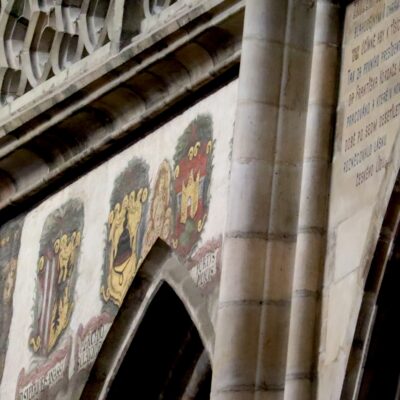Originally founded as a colonia latina (latin colony, inhabited by non-roman citizens), one of the last roman outposts against the Celts threatening the empire from the east, the city rapidly grows to become a fundamental administration and military centre, starting from the Republican age.
Capital of the X Augustan region (Venetia et Histria), in the imperial age the city sees a significant spread of Christianity, due to its geographic contacts with the Greek world, as well as a vital Jewish community.
Aquileia has been also one of the historic capitals of Friulian political life in the middle ages: it is not surprising that the political entity which characterised the region in that time, the Patriarchy, is called “Patriarchy of Aquileia”. Although the Venetian conquest of 1420 deprived the patriarch of his temporal power – which was legally hold since 1077 – on most of the current territory of Friuli, its political figure will persist till 1751 as a holder of the spiritual power.
Nowadays Aquileia’s population is just about 3000 inhabitants. It is estimated that during the roman empire the city reached the peak of 200.000 inhabitants; this can be noticed by the impressive monumental complex around the current city.
What is there to visit? The most significant building is the Basilica, authentic witness of essential traits of the ancient Christianity in the west. One of these traits is undoubtedly the mosaic of Old Testament’s scenes, and the early christian basilica which consists of the actual left nave of the church.
Furthermore, the Forum’s ruins and the fluvial port are also worth visiting, as well as the archaeological museum which exhibits many material remains found in the area, particularly regarding gravestones, statues and ancient currency.
Visiting Aquileia can be made within a day’s time from any place of Friuli. A few hours visit is enough for the traveller to dive in the atmosphere of one quite limited reality, with a glorious past.
Nato negli USA, da sempre vivo in Friuli. Laureato in Lettere Classiche, sono laureato in Filologia Classica presso il Collegio Superiore dell’Università di Bologna e in Studi Interdisciplinari Europei al Collegio d’Europa, campus di Natolin. Fieramente europeo, le mie giornate son in perpetua oscillazione tra Omero e il Manifesto di Ventotene. Opero giorno per giorno per costruire una nazione, un continente, una comunità che riconoscano il valore della cultura e che in essa si riconoscano.





